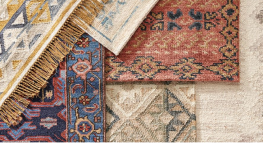
Browsing the history of Persian carpets is like a fascinating journey back thousands of years. A journey to the heart of culture and art of a country for which no limits can be imagined. Iranian handwoven carpets have long fascinated the world with their complex designs, vivid colors and exceptional raw materials. These carpets are not only functional items, but artistic masterpieces that reflect the rich history, culture and traditions of the regions where they are woven. In this article, we reviewed the history of Iranian carpet and its importance in culture, economy and international relations and examined its evolution in different governments and dynasties.
Looking at the history of the exquisite Iranian carpet, we see that this handicraft is one of the oldest and its origin goes back to the Achaemenid Empire, which covered Europe, Asia and Africa from 350 to 550 BC. The story of Iranian carpets begins with simple materials, because the first carpets were woven from bamboo and plant stems from the lower swamps of Mavarlanhar. These early mats met the goals of their creators, i.e. a surface to sit and sleep on, but they lacked the comfort and luxury of Iranian carpets that we know today. In order to produce a more complete and better flooring, Iranians started to produce a type of underlay by interweaving animal wool.


 فارسی
فارسی عربي
عربي Русский
Русский

